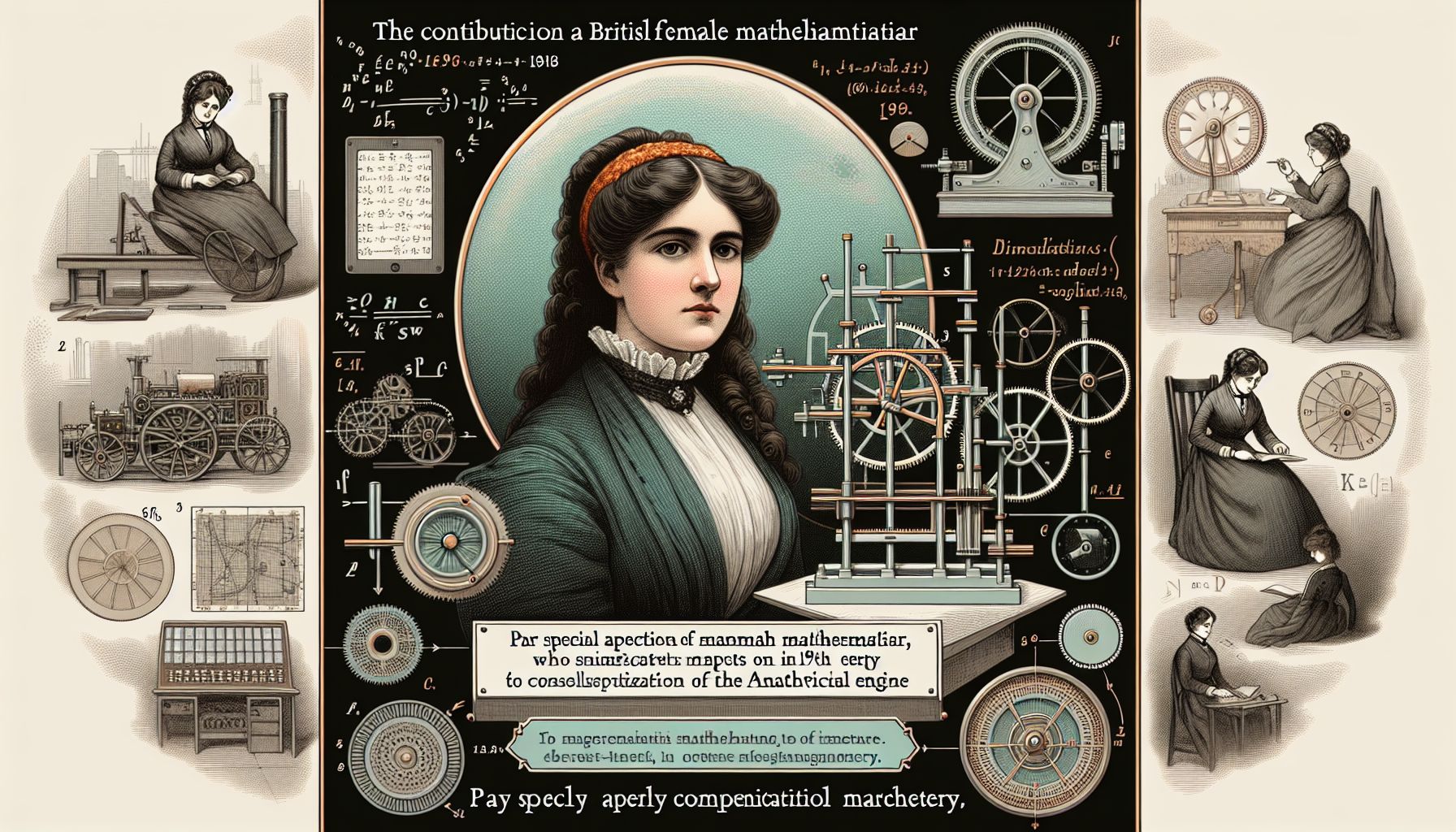📌 Let’s explore the topic in depth and see what insights we can uncover.
⚡ “Before Steve Jobs, before Bill Gates, there was Ada Lovelace - a true pioneer who made her mark in programming long before computers even existed. Discover how this 19th-century woman set the stage for the digital age we live in today!”
Have you ever wondered about the origins of computer programming? Before the age of digital computers, smartphones, and sophisticated coding languages, a young woman in the 19th century laid the foundation of what we now know as programming. This woman was Augusta Ada King, Countess of Lovelace, better known as Ada Lovelace. 📜 Ada Lovelace was a mathematician, writer and a visionary whose contribution to the development of the Analytical Engine, a mechanical general-purpose computer, is an inspiration to many in the tech industry today. This blog post delves into the remarkable contribution of Ada Lovelace to programming the Analytical Engine, and how her legacy continues to inspire modern day programming. 👩💻🌟
🏛️ Ada Lovelace and the Dawn of Programming

"Ada Lovelace: Pioneering the Analytical Engine Programming."
Ada Lovelace was born in London in 1815 to Lord Byron, a famous poet, and Anne Isabella Milbanke, a mathematician. Despite being Lord Byron’s daughter, Ada’s mother ensured her education leaned more towards logic and mathematics to keep her away from her father’s “reckless” artistic temperament. Little did she know that this education would lead Ada to make a significant contribution to the world of technology. 🎓💡 Ada’s mathematical abilities caught the attention of Charles Babbage, a mathematician and inventor known as the “father of the computer.” Babbage was working on a machine called the Analytical Engine, a theoretical design for a universal mechanical computer. It was designed to perform any kind of calculation using punched cards, a method used in the Jacquard loom to weave complex patterns. Ada Lovelace, intrigued by this project, decided to help Babbage with his endeavour. 🤝🔬
🎛️ The Analytical Engine: A Marvel of its Time
The Analytical Engine was quite ahead of its time. Unlike the existing calculators, which could only perform simple arithmetic, the Analytical Engine was designed to carry out complex calculations. It was equipped with an arithmetic logic unit (ALU), control flow in the form of conditional branching and loops, and integrated memory, making it the first design for a general-purpose computer. 🖥️🔄 However, it was Ada Lovelace’s notes on the Analytical Engine that truly underscored its potential. In 1843, she translated an article by Italian mathematician Luigi Menabrea on the Analytical Engine, but her notes were three times longer than the original article. These notes, known as “Note G”, contained what many consider to be the first algorithm intended to be processed by a machine, effectively making her the world’s first computer programmer. 📝📚
💡 Ada Lovelace: Visionary of Computer Programming
While Babbage saw his invention as a super calculator, Lovelace had a much broader vision. She saw the potential of the machine beyond just calculations. She wrote, “The Engine might compose elaborate and scientific pieces of music of any degree of complexity or extent.” This was a revolutionary idea at the time, and it’s the basis of how we use computers today - from graphic design to artificial intelligence. 👩🎤🏞️ Ada Lovelace’s vision for the Analytical Engine was to use it for more than just number crunching. She imagined a future where devices like the Analytical Engine could create art, compose music, and even produce content based on a set of instructions or a program. This concept was groundbreaking and set the stage for the development of modern computer programming. 🎼🎨
📚 Ada Lovelace’s Legacy in Modern Computing
Lovelace’s understanding of the Analytical Engine’s capabilities was so advanced that it took nearly a century for technology to catch up. She understood that any piece of content, whether musical, textual or other, could be translated into a digital form and manipulated by machine. This fundamental idea underlines most of our digital technology today. 📱💻 Ada Lovelace’s contribution to the world of programming has been recognized and celebrated over the centuries. Every second Tuesday of October is celebrated as Ada Lovelace Day, an international celebration of the achievements of women in science, technology, engineering and maths (STEM). Ada Lovelace’s work is a testament to the fact that women have been, and will continue to be, instrumental in the field of technology and programming. 👩🔬🎉
🧭 Conclusion
Ada Lovelace was a visionary who saw the potential of the Analytical Engine beyond its creator’s understanding. Her notes on the machine contain what is essentially the first algorithm designed to be processed by a machine, making her the first computer programmer in history. Her vision of a future where machines could create art and music is a reality today, and her contribution to programming and technology is an inspiration to many in the field, particularly women. 🏆🎯 Ada Lovelace’s story is a reminder that technology and the humanities are not separate entities, but rather two sides of the same coin. In the words of Steve Jobs, “Technology alone is not enough—it’s technology married with liberal arts, married with the humanities, that yields us the results that make our heart sing.” So, let’s celebrate Ada Lovelace, the enchantress of numbers, whose contribution to programming the Analytical Engine has made our digital hearts sing. 🎶🥳
🚀 Curious about the future? Stick around for more discoveries ahead!
